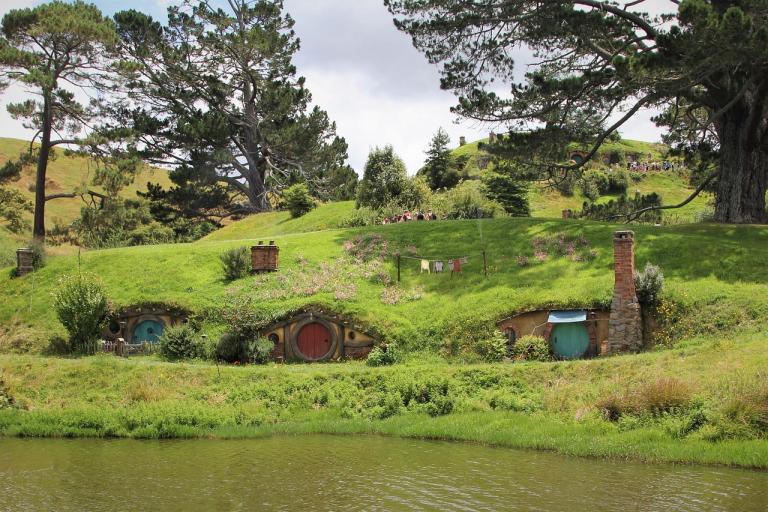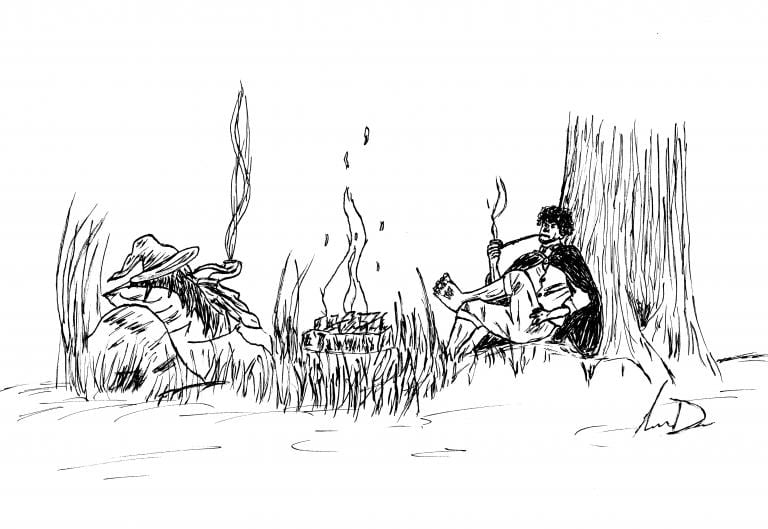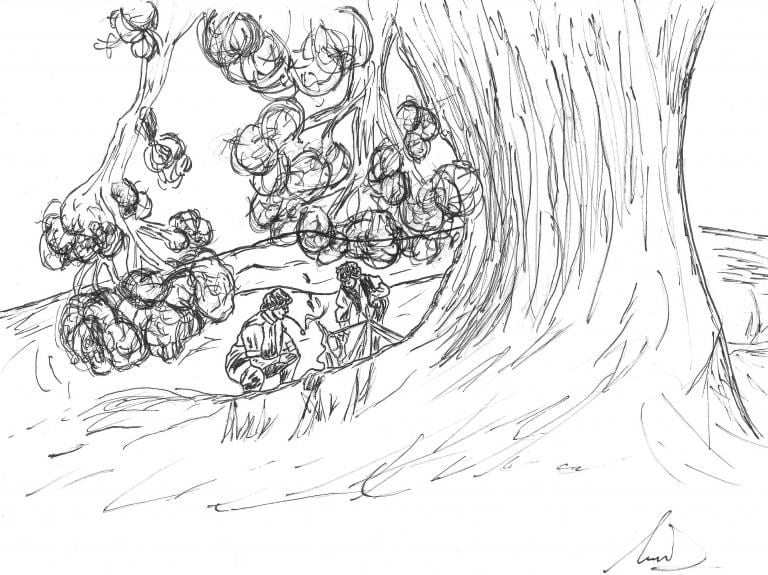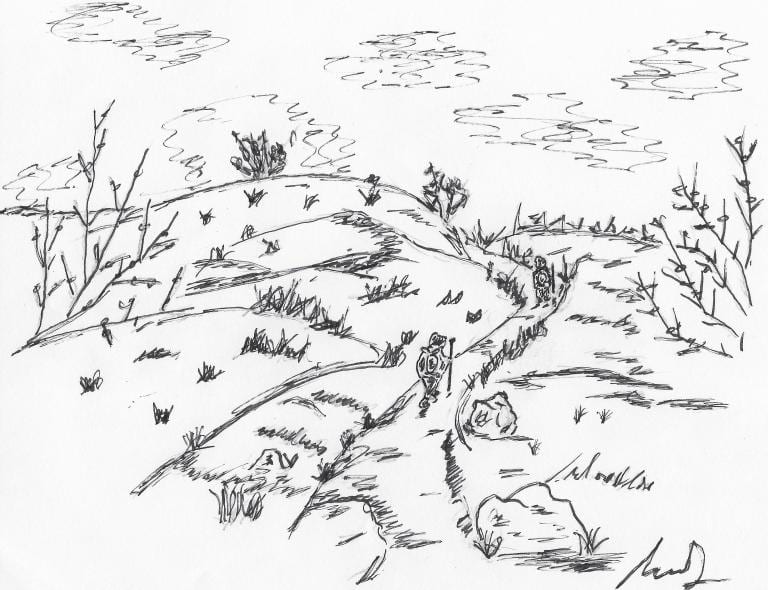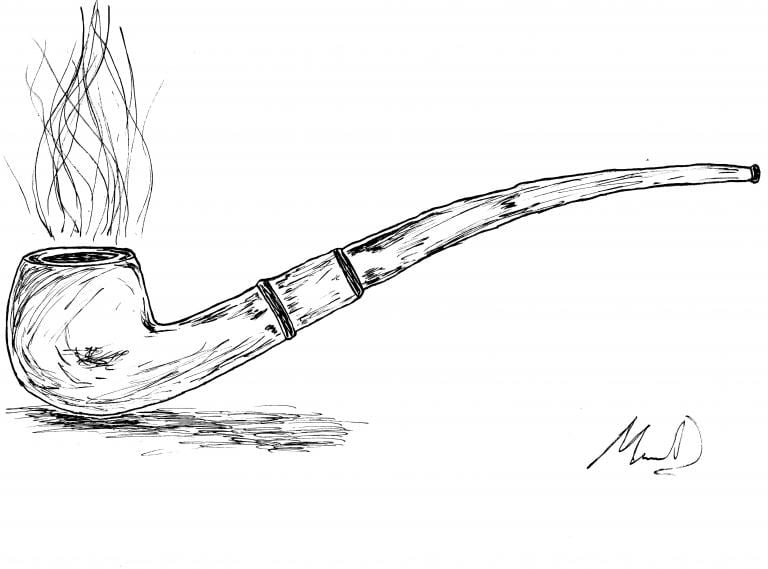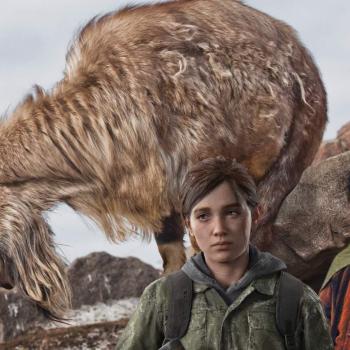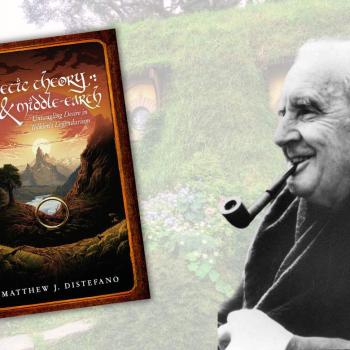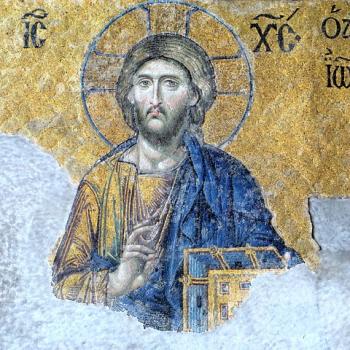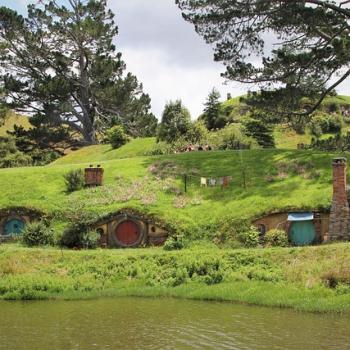Anyone who knows me knows I am obsessed with The Lord of the Rings, Middle Earth, and all things Tolkien. I’m such a nerd that I’ve studied the mythopoetic stories found in The Silmarillion and even read through The Unfinished Tales. I use LOTR analogies all throughout my personal writings and if I ever get another dog, will assuredly name him Tom Bombadil (to the annoyance of both my wife and daughter). But, c’mon, isn’t that the coolest name for a dog ever?
Anyway, what I love most about Tolkien’s writings when compared to, let’s say, C.S. Lewis’ “Narnia,” is that they aren’t so obvious. They aren’t so cut and dried. The characters are more archetypal than analogous. In “Narnia,” Aslan is Christ. Peter is, well, Peter. Edmund is pretty much Judas. And so on. But in Middle Earth, it’s more complicated. And I like that.
To that end, while I still like Lewis, I feel as if Tolkien offers much more in the way of spiritual truth. At least for me and the way I approach things. So, without further ado, here are 7 spiritual truths we can glean from The Lord of the Rings.
I. There Aren’t Necessarily Good Guys and Bad Guys
It’s easy to miss this fact, given that Elves, Dwarves, Men, and Hobbits battle Orcs, Uruk-hai, Goblins, and the big, bad Sauron all throughout the books. But this is too simplistic. Men, for instance, are on both sides of the war. Men from the East align with Saruman and Sauron. Men from Rohan and Gondor, however, align with Aragorn and Theoden. And even Sauron was, once upon a time, one of the noble Maiar (primordial spirits who helped shape the world), created by Valar. To complicate matters, even Sauron isn’t the first to fall away. He followed Melkor (Morgoth) who himself wasn’t initially created with malice in his heart. It was only after singing a dissonant melody that he fell away. So, that is all just the nerdy way of saying that both Sauron and Morgoth were created “good.”
II. The Hero of the Story Isn’t Obvious
This may shock people, but I’ll say it anyway: Gollum may be the hero of the story. Think about it. No one can destroy the Ring, not even Frodo. The only way the Ring gets destroyed is because, after Frodo walks away from the precipice, Gollum attacks him and eventually falls to his doom alongside the Ring. This shouldn’t be a surprise, however. Gandalf, being the prophet that he is, reminds Frodo that: “My heart tells me that he has some part to play yet, for good or ill, before the end; and when that comes, the pity of Bilbo may rule the fate of many – yours not least.” This obviously came to pass, for without Gollum, Frodo would have walked back down the side of Mt. Doom, with the Ring on his finger, while the fate of Middle Earth would have been doom and gloom (pardon the pun).
III. Toxic Masculinity Isn’t Championed
One would think that a trilogy of books which includes epic battles between Men and Orcs would be toxic AF. But it’s not. The men of Middle Earth are softies. They sing. They write poetry. They are sentimental. Some of this is missed in the movies, but all throughout the books, Aragorn, Legolas, and the common, working-man (Hobbit, actually) Sam, are all singing songs and reciting sacred poetry. It’s fabulous. Out and out fabulous!
IV. Middle Earth Is Meant to be Green
Tolkien wasn’t a huge fan of industrialization. In a letter he once penned, he described himself as a Hobbit in all but size, enjoying gardens, trees, and unmechanized farmlands. We see this sacred care for the planet in the battle between the Ents and Saruman. When Saruman attempts to use the powers of industry to lay waste to Fangorn Forest, the Ents fight back and destroy Orthanc. This shouldn’t go unnoticed, especially in the age of extreme climate change.
V. Death is Not the End
We aren’t exactly sure what happens to beings of Middle Earth after they die. Some of it is ambiguous, and perhaps different things happen to different beings. There are prophesies, but sometimes even these contradict one another. But we do get a glimpse into some things. Gandalf the Grey, for instance, actually dies after battling the Balrog. He basically falls into nothingness, passing out of time altogether, until he is reincarnated as Gandalf the White. What happens at the end of all things, though? We aren’t sure, but there are prophesies about restoration, and even a song by Tom Bombidil about a completely “mended world.”
VI. War is Hell
Tolkien fought in World War I, so it is no surprise that he doesn’t glamorize war in his writings. In Middle Earth, war is hell. Beloved characters die. But more than that. War is never really used as a way to accomplish a grand goal. Helm’s Deep is attacked and defended. Minas Tirith is attacked and defended. And even the final battle in The Return of the King (The Battle of the Morannon) is initiated only to draw out Sauron’s forces so Frodo and Sam could have a clear path to Mt. Doom. In other words, it’s nothing more than a diversion tactic.
VII. Strength in Diversity
The unified races (Elves, Men, and Dwarves) who defeat Sauron’s forces in the end are not unified when the books begin. They are divided. Elves and Dwarves hate each other. Men aren’t to be trusted. Gondor and Rohan are at odds. If this were to stay the norm throughout the Third Age, Middle Earth would have fallen into shadow. However, it doesn’t. Elves come to the aid of Rohan. Rohan rides to aid Gondor. Gimli and Legolas become best of friends and are heroes of sorts, thwarting darkness and aiding the peoples of Middle Earth throughout the entirety of the trilogy. The take away? Celebrate our diversity. Champion our differences and our unique characteristics. And if we do, we will be much better off. This seems especially apropos at an hour like this.
All that said, if you are a Tolkien nerd like I am, please feel free to comment below. Let me know what spiritual truths you see in the books. And if you are new to Middle Earth, welcome. We hope you enjoy the territory. Let’s grab a drink at the Green Dragon sometime.
If you wanna get to know me better, please follow me on social media. I’m pretty active on all platforms:
Also, if you’ve been digging my work on here, and want to see me be able to continue writing as close to full-time as humanly possible, please take a look at my Patreon page at www.patreon.com/mjdistefano. Even $1 a month helps bigly!!!


